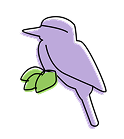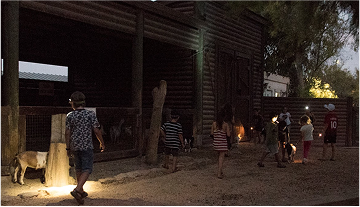Guru Garden is the only Australian zoo in the world located outside of Australia. The garden allows for pleasant and intimate family entertainment with maximum proximity to the animals.
How did the idea to establish an Australian zoo come about?
“The uniqueness of Gan Guru since its establishment is that visitors can get close to the animals, feed kangaroos, pet them and connect with the flora and fauna without the fences or cages that are associated with other zoos,” says Yehuda. “The idea started in 1991. A committee at Kibbutz Nir David approached me asking to establish a tourist project that combines education with nature and experience. As an avid fan of the Winnie the Pooh stories, I initially wanted to establish a place called “Gan Winnie the Pooh”. The problem is that Winnie the Pooh is not very attractive after the age of two and my proposal was rejected. After brainstorming with Prof. Rami Degani, also a member of Kibbutz Nir David and chairman of Nir David Tourism, he proposed bringing kangaroos to Israel.” “Slowly Rami’s idea developed and we proposed building an Australian zoo. “What led us to create from scratch an educational place that makes nature and wildlife accessible to future generations,” Yehuda recalls. “At first, the idea did not receive widespread support, but a few months later, tractors arrived on the site and we began establishing the garden.” In 1993, work began on establishing the garden, infrastructure, permits, and animal displays, and 3 years later the garden opened to visitors.

Guru Garden, 1995, the days of its establishment
Where and how did you get the kangaroo?
“As soon as the decision was made to bring kangaroos to Israel, I called zoos in Europe and faxed 84 zoos and didn’t get a single response. Then I thought, if the kangaroo is an Australian animal, why not go to the source? I wrote letters to 12 zoos in Australia and suddenly I started getting positive responses and invitations to come and learn about the care and maintenance of Australian animals,” Yehuda says excitedly. “After a month, I found myself on a plane to Australia with great hopes of returning home with a kangaroo.” Yehuda stayed in Australia for a long time, working in zoos and learning about the animals of this unique continent. After a few months, the approvals he was waiting for arrived: a certification certificate from the Australian Wildlife Conservation Authority and a license to care for and bring Australian animals to Israel.”

Guru Garden, 1995, the days of its establishment
So… how did the kangaroos come to Israel?
“The first animal we received was a kangaroo. 11 items were collected from 3 zoos in Australia, it was very exciting!, says Yehuda. All the animals were brought in by plane. Guru Garden has a license to import all Australian animals – lizards, snakes, birds, mammals and even predators.” A few months later, more animals arrived at the garden, wallabies and betunges – unique and sweet marsupials, as well as dozens of birds and parrots, cockatoos and songbirds.
Tell us a little about Gan Guru.
“Guru Zoo has been a member of the Israeli Zoos Association since its founding. For the past two years, the zoo has been in the process of becoming a member of the European Association of Zoos and Aquariums (EAZA). This organization has very strict regulations regarding the care and welfare of animals. I am happy to admit that we meet all of the organization’s strict standards.”
How do the animals cope with the valley’s weather?
The decision on which animals to bring to Israel was related not only to the character and values we built for the Guru Zoo, but also to the weather the animals are used to in Australia. Speaking professionally, we brought all the animals that correspond to the climate zones: In Australia, the animals are on latitudes 31 to 32 south. We are on latitudes 31 to 32 north, and therefore, there are a number of animals in their displays that have heating or cooling devices that adjust the temperature to what the animal is used to from its habitat in zoos in Australia. All the other animals are used to the heat of the summer and know how to deal with the Israeli winter.”
What is so special about Guru Garden?
The zoo was built as an educational-family zoo, this is one of our values that has not changed since 1996. In addition to animal conservation and welfare, it is important to us that the audience of visitors who pass through here understand the importance of the individual in preserving nature, flora and fauna. In addition, we believe in an indirect connection between animals and humans. It is important to us to allow anyone who just wants to get close, touch, and connect with nature in a way that does not exist in any other zoo in Israel. I see children and families who travel with us and around them are peacocks and black swans sitting, as well as entrance to the giant aviaries, where everyone can feed the parrots.”

Right: Yehuda Gad and Prof. Rami Dageni, event marking the 20th anniversary of Gan Guru 2016
And what about a koala? Why isn’t there a koala in Guru Garden?
“Guru Zoo has permission to import and breed koalas. Until a few years ago, two pairs of koalas lived in the zoo that made it to a safe home and passed away at a very advanced age. Only a year after their deaths did we receive information that one of them (Mindy) is the second oldest koala ever recorded in the world – Mindy lived for 18.5 years, of which 15 years lived in Guru Zoo. The Australians have clear procedures regarding taking koalas out of Australia. We are in contact with the relevant authorities and I very much hope that in the coming years we will receive a koala from one of the zoos in Australia.” An interesting historical fact is the meaning of the word koala in the Aboriginal language: koala means “animal without water.” This is because it consumes very little water and feeds almost 100 percent on eucalyptus leaves. In Australia, the number of koalas in the wild is estimated at about 150,000 individuals; it has not yet been declared an endangered animal.







